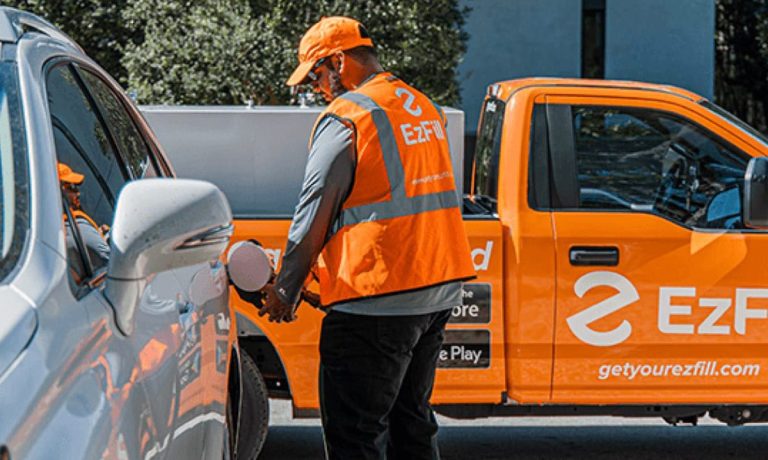
For some consumers, the idea of ordering groceries online to be delivered by the store that same day would not have even crossed their mind two years ago. But after months of a global pandemic that accelerated digital adoption and other trends, making purchases for same-day delivery through online marketplaces has become second nature.
Mike McConnell, CEO of mobile fuel company EzFill, said, however, that even as buying groceries, shopping, transportation and other everyday activities have transitioned to an on-demand format through platforms such as DoorDash and Instacart, putting gas in the car has lagged behind despite similarly being an activity that consumers do every day.
“The on-demand platform immediately gave the customer two different ways to do something that was a really routine, everyday things that they didn’t have a choice before,” McConnell said. “And then it accelerated rapidly and is quickly becoming just a standard norm for a lot of people.”
PYMNTS’ research, conducted in collaboration with Carat from Fiserv, found that 64% of all consumers buy more retail items online now than before March 2020; 58% order food online more, and 46% buy groceries digitally more often than before the pandemic. Additionally, 27% of consumers purchase products online that are delivered by the store or a local delivery service more often now than 18 months ago.
Read more: Bring-It-To-Me Economy Ascends As Consumers Embrace Home-Centric Lifestyles
Retail fueling, McConnell said, could be the next big consumable domino to fall, especially as real estate prices continue to rise, and cities look for more aesthetically pleasing uses for sites. In March, Petaluma, California, became the first city in the U.S. to ban new construction of gas stations, with several others considering similar restrictions.
“You don’t hear a lot of people talk about they just love going to the gas station,” McConnell said. “So, when you offer up a possible alternative, they grab ahold of it pretty well.”
Last month, EzFill raised nearly $29 million through an initial public offering (IPO), which McConnell said will be used to fulfill the company’s long-term growth plans. The company currently operates only in the Miami area but has plans to expand soon to several other Florida cities, including Orlando, Jacksonville, Tampa and Fort Lauderdale, and it has its sights set on Atlanta; Nashville; New York City; Charleston, South Carolina; and the greater Washington, D.C. area.
“I’m looking at this concept to really grow to a billion-dollar company at the end of the day,” McConnell said. “That’s the long-term vision of this — how we can get there and how we can get growing as quickly as we possibly can.”
Digital Payments
EzFill runs its fueling operation through three different verticals: retail fueling for consumers; fleet fueling for businesses; and specialty, which in the company’s hometown of Miami means marine fueling.
“As this starts to grow and on-demand, mobile fueling continues to grow, we hope to be able to take advantage of that as far as our growth strategy and capitalize on that in future years,” McConnell said.
Even on the B2B side, McConnell said very few people are writing checks to pay their invoices — most transactions for fleet fueling occur digitally. For consumers, he said, most of the payment occurs via credit card.
“A big part of technology is efficiency,” McConnell said. “As you continue to grow, when you look at your business and you look at different things, utilizing technology from an efficiency point of view is a big piece of not only our business strategy but I’m sure a lot of business strategies as you go forward.”
The Perks of Convenience
McConnell said he’s had conversations with management of several companies, office parks and residential building operators who are also interested in providing EzFill’s service as a perk for employees and tenants.
“This is just another feature that they could offer as part of the accommodation or services that they provide for either their employees or where people live,” he said.
McConnell added that for operators like EzFill and employers looking to satisfy employees, it’s going to be a continuing evolution to figure out other ways to make people’s lives more convenient.
“The customer paying for a convenience fee or a delivery fee or those kinds of things, it’s kind of normal and acceptable,” he said. “They understand what it is and what they’re paying for and what the value is. So, I think across the industry, we’ll just continue to grow more and more with different products and services as they become available.”